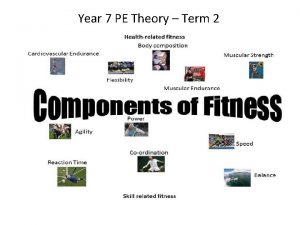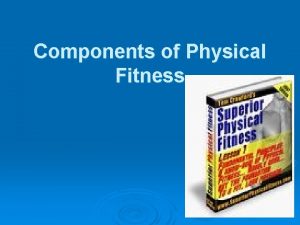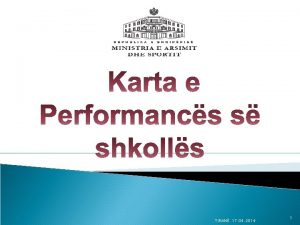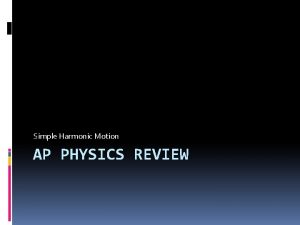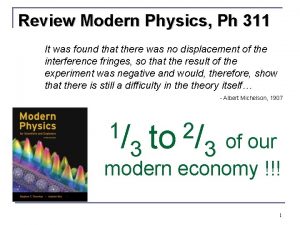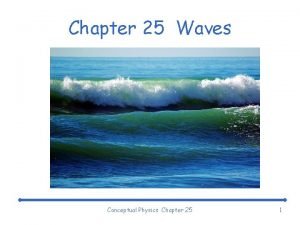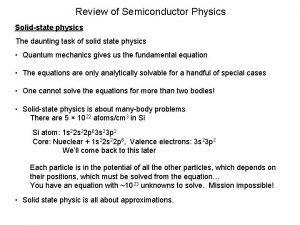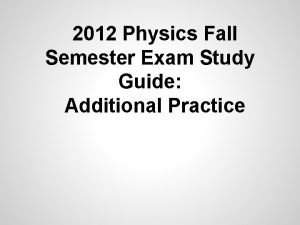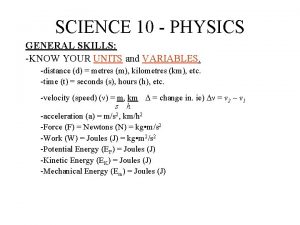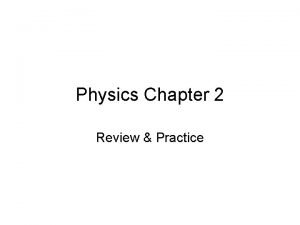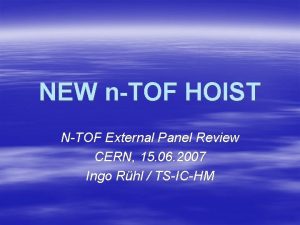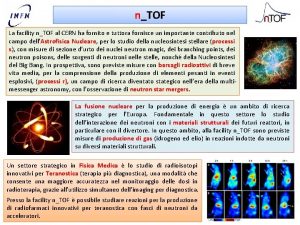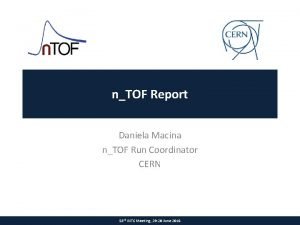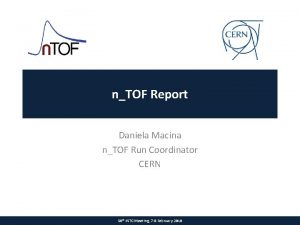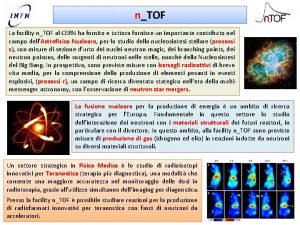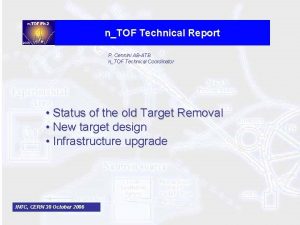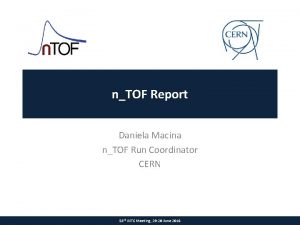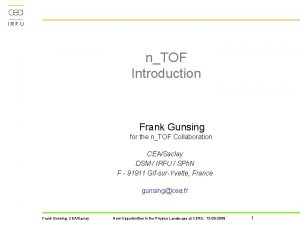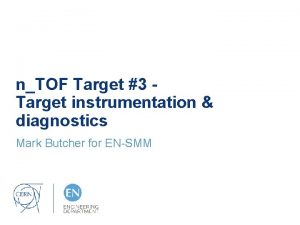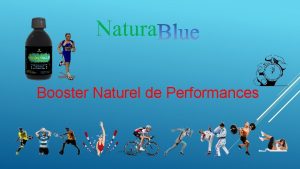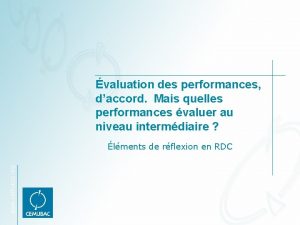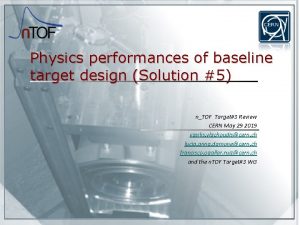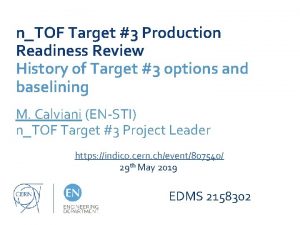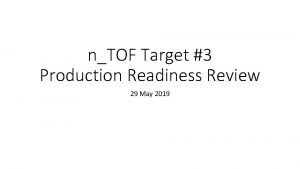nTOF Target 3 Physics performances nTOF Target3 Review















![Sol #5: ~Variation wrt Solution #0 [%] Comparison: current target, Sol #5 with borated Sol #5: ~Variation wrt Solution #0 [%] Comparison: current target, Sol #5 with borated](https://slidetodoc.com/presentation_image_h2/cff4416ca5c97e888e186c0f10d39b9e/image-16.jpg)


- Slides: 18

n_TOF Target #3 Physics performances n_TOF Target#3 Review CERN Nov 6 2018 Vasilis. Vlachoudis@cern. ch Francisco. Ogallar. Ruiz@cern. ch and the n. TOF Target#3 WG

Introduction General remarks • All presented solutions are for the up to date geometry as it is presented in previous talks. • All performances are for the EARx unless it is indicated differently • The results will present the current status of the solution #5 • The more “realistic” it becomes a target, the performances degrade Main updates • Include new moderator shape (not completely circular). • Include anticreep structure, but not the last version with only one layer of 4 mm Al between slices and more vertical strips. • Do not include the aluminum strips of the moderators structure yet.

Solution #5 May Review Solution under development, so far: § Good perspectives from physics point of view. § The target itself seems simple in terms of manufacturing. § Would require a new gas cooling station (also Solution #4).

Solution #5 May Review: Performances EAR 1 EAR 2

Solution #5 May Review: Performances EAR 1 prompt EAR 1 delayed

Solution #5 May Review: Performances x 6 e s crea n i Big EAR 2 prompt EAR 2 delayed

Solution #5: Introduction of Pb shielding block 28 mm gap Including a Pb block to reduce γ-flash in EAR 2 Pictures from Vincent Maire

Sol #5: Neutron Fluence ≤ x 2 Noticeable the effect of B-H 2 O EAR 1 EAR 2 8

Sol #5: Delayed γ fluence ≈1/10 ≈1/2. 5 EAR 1 EAR 2 9

Sol #5: Prompt γ fluence ≤ x 2 EAR 1 EAR 2 10

Sol #5: Resolution Function in EAR 1 1 to 10 e. V 1 to 10 ke. V 1 to 10 Me. V 11

Sol #5: Resolution Function in EAR 2 1 to 10 e. V 1 to 10 ke. V 1 to 10 Me. V 12

Sol #5: Neutron Fluence Comparison: current target, Sol #5 with borated water vs normal water as moderator. EAR 1 EAR 2 13

Sol #5: Delayed γ fluence Comparison: current target, Sol #5 with borated water vs normal water as moderator. EAR 1 EAR 2 14

Sol #5: Prompt γ fluence Comparison: current target, Sol #5 with borated water vs normal water as moderator. EAR 1 EAR 2 15
![Sol 5 Variation wrt Solution 0 Comparison current target Sol 5 with borated Sol #5: ~Variation wrt Solution #0 [%] Comparison: current target, Sol #5 with borated](https://slidetodoc.com/presentation_image_h2/cff4416ca5c97e888e186c0f10d39b9e/image-16.jpg)
Sol #5: ~Variation wrt Solution #0 [%] Comparison: current target, Sol #5 with borated water vs normal water as moderator. EAR 1 EAR 2 Sol 5_BW Sol 5_NW Neutron flux -28 +587 -87 +4 Neutron flux (1 e. V… 100 e. V) -7 +15 -12 +12 Neutron flux (100 e. V… 10 ke. V) +1. 4 +4 +17 +25 Neutron flux (10 ke. V… 1 Me. V) +10 +9 +85 +91 Neutron flux +4 +2 +103 +104 Prompt photons flux -2 -2 +43 +55 Delayed photons flux -59 +366 -92 -7 (0. 01 e. V… 1 e. V) (1 Me. V… 100 Me. V) (Above 1 Me. V) BW: Borated Water NW: Normal Water 16

Conclusions • • It fulfills all requirements expressed by the n_TOF collaboration Sol #5 exhibits similar performances wrt present target in terms of neutron flux for both areas. Better RF for EAR 2, similar RF for EAR 1 Better delayed g background for EAR 1 & 2 Increase of × 2 in the EAR 2 evaporation region is observed thanks to the better vacuum chamber design (not the target) Warning: delayed g background produced on the 2 nd collimator will be increased proportionally Borated water in EAR 2, depletes thermal peak. Sol #5 will accept higher proton intensity bunches up to 1013 p+ 30% increase wrt the present one, but still the same average power on target; therefore the 1. 66 1012 p/s limitation will still apply.

 Ntof
Ntof The ability to undertake strength performances quickly
The ability to undertake strength performances quickly The ability to do strength performances at a rapid pace
The ability to do strength performances at a rapid pace Musical ensembles and types of performances in malaysia
Musical ensembles and types of performances in malaysia Karta e performances
Karta e performances Primary target market and secondary target market
Primary target market and secondary target market Why does it happen
Why does it happen University physics with modern physics fifteenth edition
University physics with modern physics fifteenth edition Example ib physics ia
Example ib physics ia Ap physics 1 shm review
Ap physics 1 shm review Review of modern physics
Review of modern physics Random walks
Random walks Physics semester 1 review
Physics semester 1 review Chapter 25 concept review physics waves
Chapter 25 concept review physics waves Review of semiconductor physics
Review of semiconductor physics Physics fall final exam review
Physics fall final exam review Physics fall semester exam review
Physics fall semester exam review Science 10 physics review
Science 10 physics review Glencoe physical science chapter 2 review answers
Glencoe physical science chapter 2 review answers

